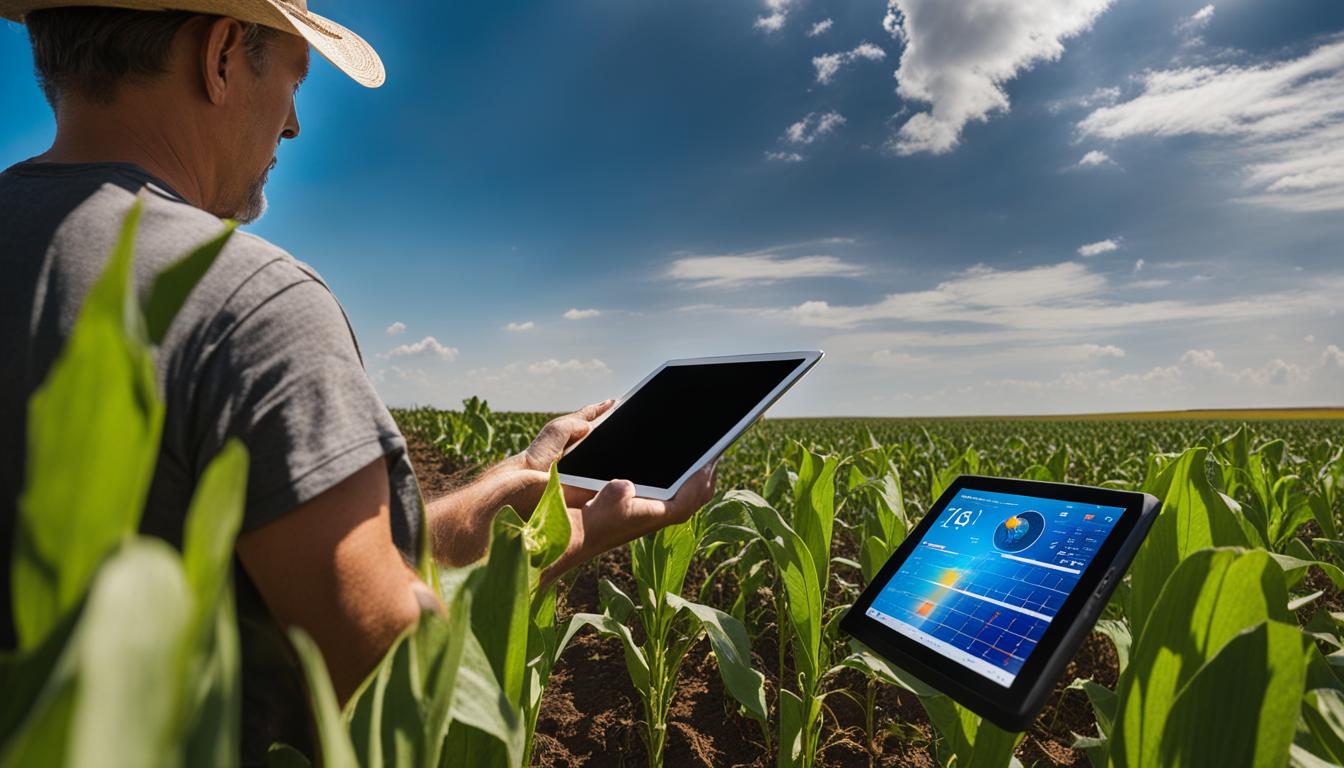Farming is a complex and dynamic industry that requires careful planning and precise decision-making to achieve optimal results. One crucial factor that significantly influences agricultural success is accurate weather data. By harnessing the power of advanced meteorological insights, farmers can streamline their farm management practices, improve crop yield, and enhance overall efficiency.
Accurate weather data forms the foundation of informed agricultural decision-making. It provides farmers with valuable information about temperature, precipitation, wind patterns, and other key weather variables that directly impact crop growth and development. Armed with this knowledge, farmers can develop effective strategies for seed selection, planting, irrigation, and pest control.
Moreover, accurate weather data enables farmers to monitor crops and prevent diseases effectively. By closely tracking weather patterns and applying weather data-driven monitoring techniques, farmers can identify potential disease outbreaks early on. This proactive approach allows them to take timely preventive measures, minimizing crop loss and ensuring healthier yields.
The benefits of accurate weather data extend beyond immediate crop management; they also play a vital role in achieving sustainable agriculture. By incorporating weather data-enabled innovations such as precision farming, smart irrigation systems, and climate-controlled greenhouses, farmers can optimize resource utilization, reduce environmental impact, and enhance long-term agricultural viability.
As the agriculture industry continues to face challenges related to climate change, evolving consumer demands, and the need for sustainable practices, accurate weather data becomes increasingly indispensable. It empowers farmers with the knowledge and tools to make informed decisions, mitigate risks, and maximize agricultural productivity.
In this article, we explore the critical role of accurate weather data in agriculture, starting with how it enhances farm management and crop yield. We also delve into its impact on farm planning, decision making, disease prevention, and the adoption of sustainable farming practices. By understanding and harnessing the power of accurate weather data, farmers can unlock their full potential and thrive in an ever-changing agricultural landscape.
The Role of Accurate Weather Data in Farm Planning and Decision Making
Accurate weather data plays a vital role in farm planning and decision making within the agriculture industry. Farmers heavily rely on precise weather information to make informed choices that optimize their operations and enhance productivity. By leveraging accurate weather data, farmers can fine-tune their farm planning strategies, ensuring optimal planting times, irrigation schedules, and pest control measures.

When it comes to farm planning, accurate weather data is instrumental in determining the appropriate timing for planting different crops. It allows farmers to align their planting schedules with favorable weather conditions, maximizing the chances of successful germination and growth. By avoiding adverse weather conditions such as frost or heavy rainfall, farmers can mitigate the risks associated with crop failure and yield losses.
Moreover, accurate weather data enables farmers to schedule irrigation effectively. By monitoring weather forecasts that include precipitation patterns, humidity levels, and temperature fluctuations, farmers can adjust their irrigation plans accordingly. This proactive approach not only conserves water but also prevents over- or under-watering, leading to optimal crop development and improved resource efficiency.
In addition to farm planning, accurate weather data supports decision making in pest and disease control. By monitoring weather patterns, farmers can predict and identify conditions favorable for pests and diseases, allowing them to implement preventive measures. From adjusting spraying schedules to deploying targeted pest control strategies, accurate weather data empowers farmers to safeguard their crops proactively and minimize damage caused by pests and diseases.
The integration of accurate weather data into farm planning and decision making has revolutionized the agriculture industry. By leveraging precise weather information, farmers can minimize risks, enhance productivity, and achieve sustainable agricultural practices. The next section explores how weather data-driven crop monitoring and disease prevention contribute to the success of modern farming operations.
Weather Data-Driven Crop Monitoring and Disease Prevention
In modern agriculture, accurate weather data plays a pivotal role in ensuring the health and productivity of crops. By leveraging weather data-driven crop monitoring and disease prevention strategies, farmers can proactively address potential threats and optimize their farming practices.
With access to precise weather information, farmers can closely monitor the health of their crops throughout the growing season. By analyzing weather patterns and correlating them with crop growth stages, farmers can identify potential disease outbreaks and take timely preventive measures.
The use of accurate weather data in crop monitoring allows farmers to detect subtle variations that may indicate the presence of pests or diseases. Early detection enables prompt intervention, preventing the spread of disease and minimizing crop loss. By adopting a data-driven approach, farmers can strategically allocate resources and implement targeted treatments, ensuring effective disease prevention.
Moreover, accurate weather data can provide insights into environmental factors that may impact crop health, such as temperature, humidity, and rainfall. By monitoring these parameters, farmers can make informed decisions regarding irrigation, nutrient application, and crop protection practices. This proactive approach to crop monitoring based on accurate weather data results in healthier plants, increased crop yield, and improved agricultural sustainability.
By integrating weather data-driven crop monitoring and disease prevention strategies into their farming practices, farmers can optimize their resource utilization, reduce the reliance on chemical inputs, and minimize environmental impact. Additionally, accurate weather data enables farmers to adopt precision agriculture techniques, which further enhance the efficiency and profitability of their operations.
In conclusion, accurate weather data is a crucial tool for farmers when it comes to crop monitoring and disease prevention. By leveraging the power of data, farmers can make informed decisions, protect their crops from potential threats, and ensure the long-term sustainability of agriculture.
Achieving Sustainable Agriculture Through Weather Data-Enabled Innovations
Sustainable agriculture is a critical goal for modern farmers, and accurate weather data plays a pivotal role in achieving it. By leveraging advanced technologies and techniques, farmers can harness the power of weather data to drive innovations that promote sustainability in their operations.
Precision farming is one such innovation that relies heavily on accurate weather data. By analyzing real-time weather information, farmers can optimize their planting schedules, manage irrigation more efficiently, and make data-driven decisions regarding fertilizer and pesticide applications. This not only increases crop yield but also minimizes resource wastage, making agriculture more sustainable in the long run.
Smart irrigation systems also benefit greatly from accurate weather data. By integrating weather forecasts into the irrigation scheduling process, farmers can ensure that crops receive the right amount of water at the right time. This prevents over- or under-irrigation, leading to improved water conservation and reduced energy consumption. Sustainable agriculture practices, driven by accurate weather data, help farmers protect natural resources while maximizing productivity.
Furthermore, climate-controlled greenhouses are revolutionizing agriculture, thanks to accurate weather data. By monitoring weather conditions and adjusting parameters such as temperature, humidity, and ventilation, farmers can create optimal growing environments for their crops. This level of control not only enhances yield but also reduces the reliance on synthetic inputs. The result is a more sustainable farming system that minimizes environmental impact and fosters long-term viability.






